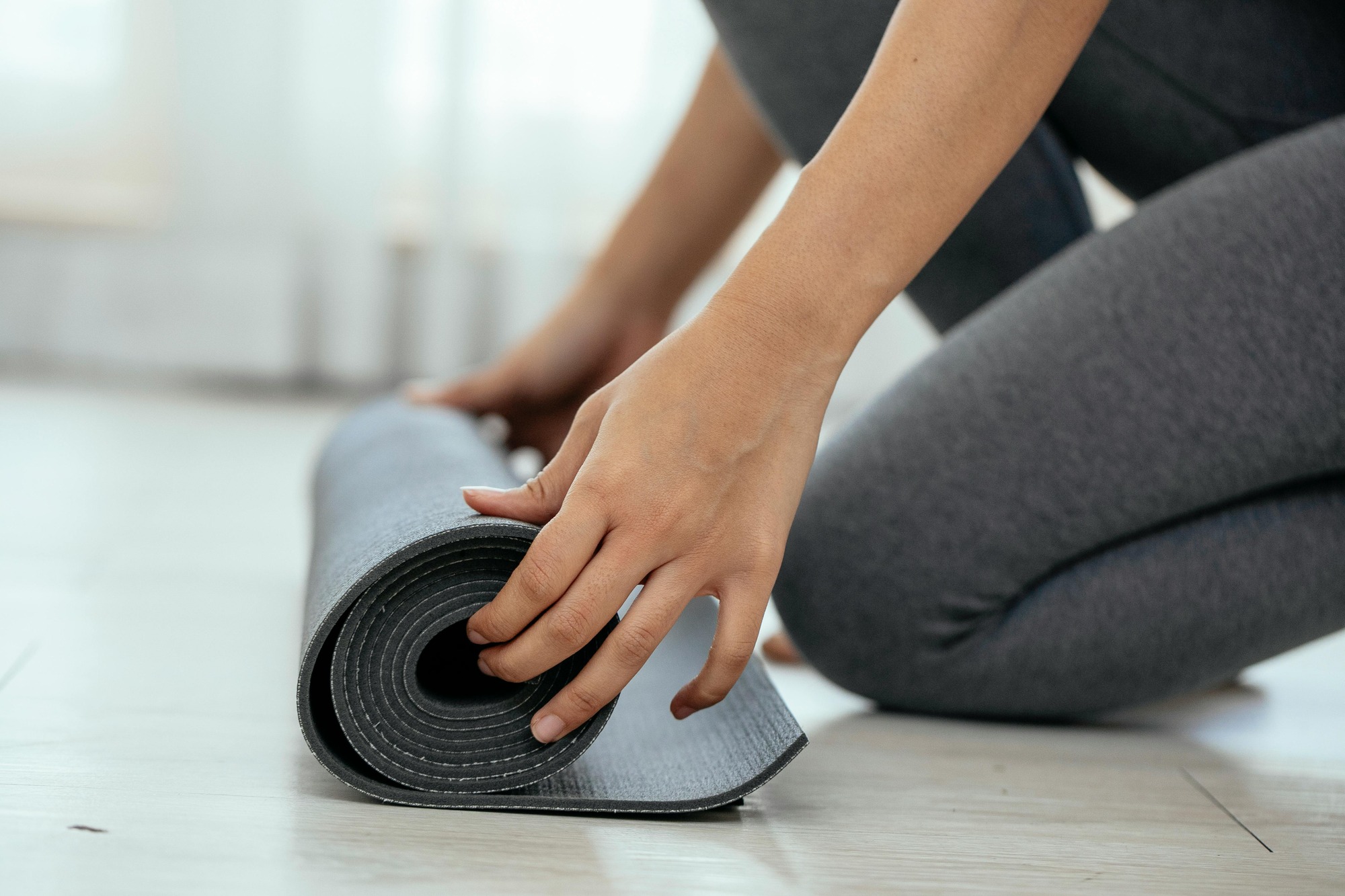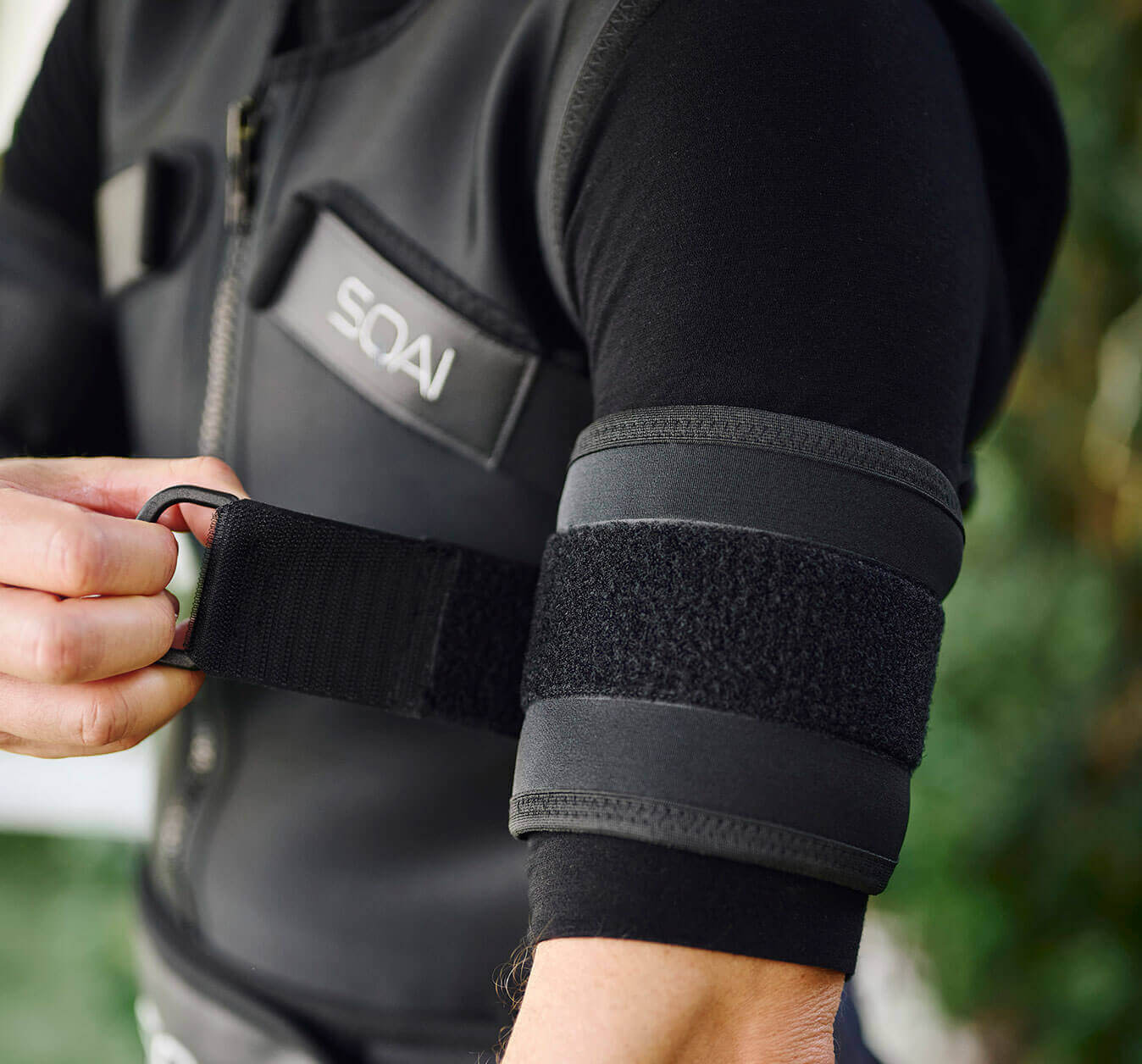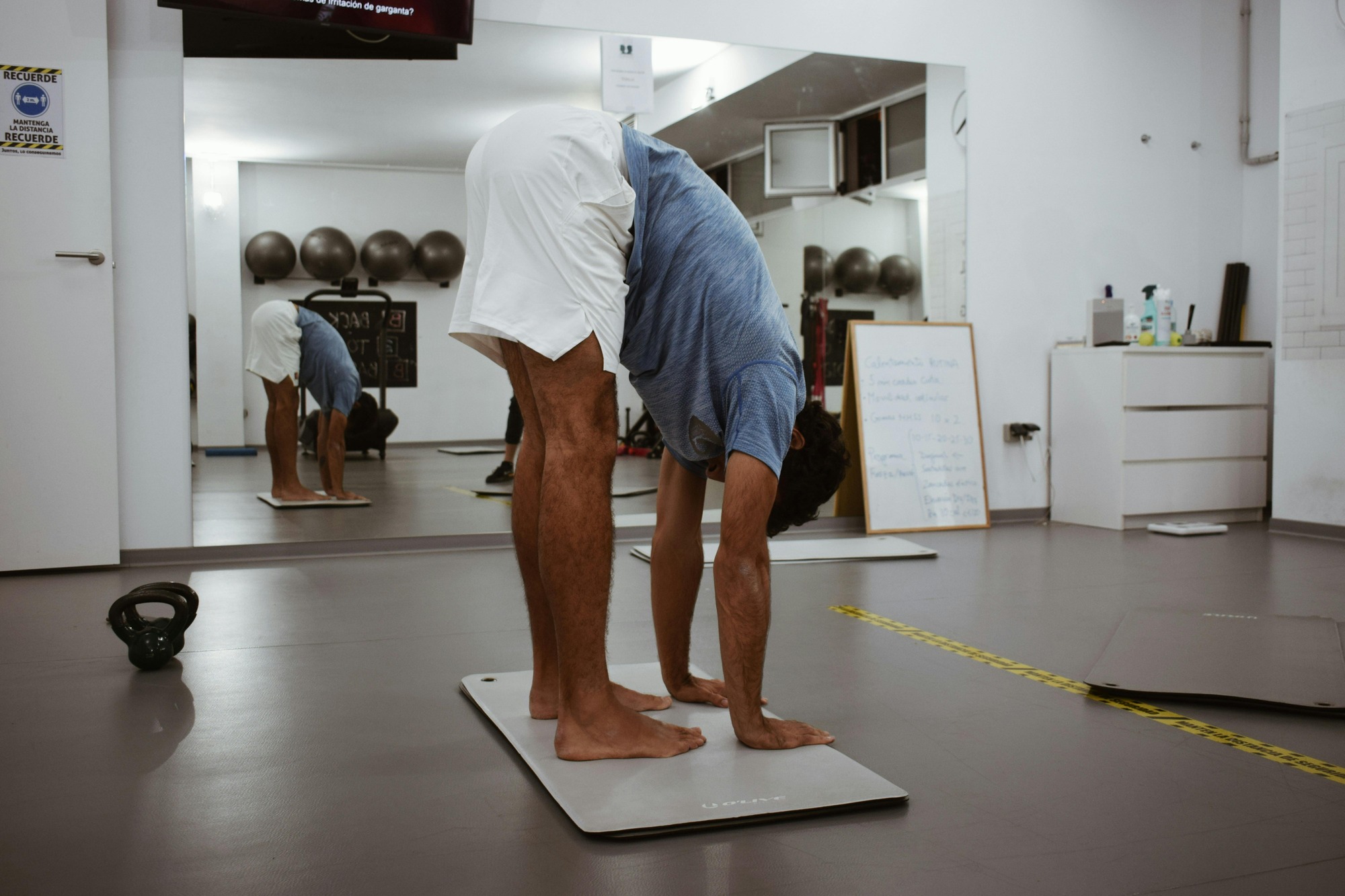Fitness is no longer confined to the walls of a gym. With the rise of technology, new training methods have emerged, offering convenient and effective ways to stay fit without leaving the comfort of your own home. One such method gaining popularity is Electro Muscle Stimulation (EMS). EMS training is transforming how people approach fitness, allowing individuals to achieve powerful results from the comfort of their living rooms. We’ll explore how EMS works and how it brings a professional fitness experience to your home, all without the need for a gym membership.
What is EMS Training?
EMS training involves using electrical impulses to stimulate your muscles, causing them to contract and relax. These impulses are delivered through specialized electrodes placed on your skin, targeting specific muscle groups. The electrical stimulation mimics the natural signals your brain sends to muscles, but at a much higher intensity. As a result, EMS training activates muscle fibers that are typically harder to engage with traditional exercises.
EMS has been used in rehabilitation and physical therapy for years, but its application in fitness is a relatively new concept. Today, EMS devices are available for home use, offering an innovative way for individuals to enhance their workouts and achieve fitness goals faster and more efficiently.
The Convenience of EMS at Home
One of the most appealing aspects of EMS is the convenience it brings. Traditional gym workouts can be time-consuming, often requiring travel, waiting for equipment, and committing to long sessions. With EMS, all you need is a device, some comfortable clothing, and a small space in your home to get started. Here's how EMS training eliminates the need for a gym:
1. Compact and Portable Devices
EMS devices are compact and portable, making them easy to use in small spaces like your living room, bedroom, or even while sitting at your desk. Many EMS products are designed to be wearable, with electrode pads that can be attached to specific areas of your body, such as your core, arms, or legs. This flexibility means that you can use EMS training at any time, without needing access to bulky gym equipment.
2. Time-Efficient Workouts
Traditional workouts often require 45 minutes to an hour, and that’s just for one muscle group. EMS sessions, on the other hand, typically last only 20-30 minutes but provide the equivalent intensity of a much longer workout. This time efficiency is a huge draw for busy individuals who find it hard to make time for gym sessions but still want to experience a full-body workout.
With EMS, you can target multiple muscle groups simultaneously in a short time frame. Whether you’re focusing on your core, legs, or upper body, EMS delivers a full-body workout in a fraction of the time.
3. No Need for Equipment or Machines
Unlike traditional gyms that require specialized machines, weights, and other equipment, EMS eliminates the need for all of that. You don’t need to worry about crowded spaces or waiting for equipment. Simply put on the EMS device, and you’re ready to go. This makes EMS particularly appealing for individuals who either can’t access a gym or prefer a minimalist workout setup.
4. Privacy and Comfort
For many people, working out in a gym can feel intimidating. Whether it’s the fear of judgment or just the hassle of getting ready and traveling, gyms are not always the most comfortable environment for everyone. EMS training, however, provides the privacy of working out at home. You can train in your own space, at your own pace, without the pressure or distractions that often come with gym settings. Additionally, you can wear whatever you feel most comfortable in, without worrying about gym attire.

How EMS Transforms Your Living Room Into a Personal Fitness Studio
EMS training brings the professional fitness experience directly into your home. With personalized programs and adjustable settings, EMS offers a variety of benefits that can help you achieve your fitness goals faster than traditional methods.
1. Targeted Muscle Activation
One of the most significant advantages of EMS is its ability to activate muscles more effectively than traditional exercises. While conventional workouts rely on voluntary muscle contractions, EMS stimulates deeper muscle fibers that are often hard to engage through regular training. This targeted activation leads to more efficient muscle building and toning, providing results in a shorter period.
2. Full-Body Workout with Minimal Effort
EMS devices can target multiple muscle groups simultaneously, providing a full-body workout with minimal effort. For example, many EMS devices allow you to engage your core, arms, and legs at once, enhancing the effectiveness of your workout. Unlike conventional exercises, which may require separate movements to target different muscle groups, EMS combines all of them into one session. This full-body engagement helps improve strength, endurance, and overall fitness more efficiently.
3. Muscle Recovery and Rehabilitation
In addition to strengthening muscles, EMS is widely used for muscle recovery and rehabilitation. If you're recovering from an injury or dealing with muscle soreness, EMS can help promote circulation and relieve tension. The low-impact nature of EMS also makes it suitable for those with joint issues or other mobility limitations. By using EMS at home, you can enhance your recovery process and get back to full strength faster.
4. Customizable Intensity
EMS devices often come with adjustable settings, allowing you to customize the intensity of your workout. Whether you're a beginner or an experienced fitness enthusiast, you can tailor the session to your fitness level. This personalization ensures that you get the most out of each session while minimizing the risk of overexertion or injury. As you progress, you can gradually increase the intensity to continue challenging your muscles.

Benefits of EMS Training at Home
The benefits of EMS training go beyond convenience. Here are some of the reasons why EMS at home is such a game-changer for fitness enthusiasts:
Effective fat burning: EMS can stimulate muscle contractions that increase your metabolism, helping to burn fat more effectively.
Improved muscle tone and strength: Regular use of EMS results in toned muscles and improved strength due to deeper muscle engagement.
Reduced injury risk: EMS strengthens muscles and enhances stability, reducing the risk of injury in everyday activities.
No equipment needed: With EMS, you don’t need to invest in expensive gym equipment. The device itself provides everything you need for a full-body workout.
How to Get Started with EMS Training at Home
Starting an EMS training routine at home is easier than you might think. All you need is a reliable EMS device, a little guidance on how to use it, and a willingness to commit to your fitness goals. Here's a step-by-step guide to help you get started:
1. Choose the Right EMS Device
The first step in your EMS journey is selecting a device that suits your fitness needs. There are various EMS devices on the market, ranging from wearable ones that target specific muscle groups (like the abdomen or legs) to full-body suits that engage multiple muscles at once. Consider factors like:
Portability: If you plan on training in different locations within your home, a compact and easy-to-carry device is ideal.
Adjustable intensity: A device with customizable intensity settings will allow you to progress as you get stronger.
Battery life: Ensure the EMS device has a long battery life for uninterrupted sessions.
Take your time to research and invest in a quality device that fits your preferences.
2. Set Up a Comfortable Training Space
EMS training doesn’t require a large amount of space, but it's important to set up an area where you feel comfortable and can move freely. A clean, quiet space with enough room to stretch and perform basic exercises (like squats or lunges) is ideal. Make sure your device’s electrodes are easily accessible and that you have a surface (such as a mat) for floor exercises if needed.
3. Follow Proper Instructions
Most EMS devices come with detailed instructions on how to properly attach the electrodes, adjust the intensity, and get the best results. Pay attention to the specific areas you're targeting—whether it's the core, arms, or legs—and make sure the electrodes are placed correctly to ensure maximum muscle engagement. If you're uncertain, many EMS devices offer online tutorials or video guides.
4. Start Slow and Progress Gradually
If you're new to EMS, begin with a low intensity and shorter sessions to give your muscles time to adjust. As you become more familiar with the device and your strength increases, you can gradually increase the intensity of the stimulation. Consistency is key, so try to stick to a regular schedule (e.g., 2-3 sessions per week) to see the best results.

EMS vs. Traditional Home Workouts: A Comparison
While EMS offers a revolutionary way to train at home, how does it compare to traditional bodyweight workouts like push-ups, squats, or planks? Let’s take a closer look at how these two methods stack up against each other:
1. Muscle Activation
EMS Training: EMS stimulates deeper muscle fibers that are often difficult to engage with conventional exercises. The electrical impulses activate both slow-twitch and fast-twitch fibers, providing a more intense muscle contraction. This leads to more muscle engagement and potentially faster results.
Traditional Workouts: While bodyweight exercises are highly effective for building strength, they typically only activate superficial muscle fibers. To engage deeper muscle fibers, you may need to increase the intensity, such as by adding weights or performing more advanced exercises.
2. Workout Duration
EMS Training: One of the biggest advantages of EMS is that it delivers a high-intensity workout in a short amount of time. A typical EMS session lasts 20-30 minutes, but it can yield results comparable to longer, more strenuous workouts.
Traditional Workouts: Traditional workouts typically require more time—usually 30-60 minutes per session—to achieve the same level of muscle engagement. Additionally, exercises like squats or push-ups often need to be performed in multiple sets to be effective.
3. Effectiveness for Muscle Toning
EMS Training: Since EMS engages muscle fibers more deeply, it’s an excellent tool for toning muscles and improving muscle definition. With regular sessions, you can see quicker results in terms of toning and strengthening your muscles.
Traditional Workouts: Bodyweight exercises, while highly effective, may take longer to show visible toning, especially for those who are looking to target specific muscle groups.
4. Impact on Joint Health
EMS Training: EMS training is low-impact, making it a great option for individuals with joint problems or those recovering from injuries. The stimulation focuses on muscle contraction rather than placing stress on the joints.
Traditional Workouts: Many traditional workouts, such as running or high-intensity interval training (HIIT), can put a strain on your joints. Individuals with joint issues may need to modify their routines to prevent injury.

Safety Tips for EMS Training at Home
EMS training is generally safe when used correctly, but as with any fitness method, it’s important to follow safety guidelines to avoid injury. Here are some tips to ensure you’re getting the most out of your EMS sessions while keeping safety in mind:
1. Consult with a Healthcare Professional
If you have any pre-existing health conditions, particularly heart issues, or if you're pregnant, it's important to consult with your doctor before starting EMS training. Although EMS is safe for most people, it may not be recommended for individuals with certain medical conditions.
2. Start with Low Intensity
If you’re new to EMS, start with a low intensity to allow your body to adjust. Intense stimulation right from the start can cause muscle fatigue or discomfort. Gradually increase the intensity as your muscles become accustomed to the process.
3. Stay Hydrated
EMS training can cause your muscles to work hard, so it’s important to stay hydrated before, during, and after each session. Dehydration can make your muscles cramp and may hinder the effectiveness of your workout.
4. Use the Right Positioning
Ensure that the electrodes are placed correctly for optimal muscle engagement. Poor placement can lead to ineffective workouts or even discomfort. If unsure, follow the guidance provided with your device or seek advice from a professional trainer.
5. Give Your Muscles Time to Recover
EMS is intense, and your muscles will need time to recover after each session. Avoid overtraining and give your muscles 24-48 hours to rest between sessions. This will prevent overexertion and help you build strength progressively.

The Future of Fitness in Your Living Room with EMS Training
As the fitness industry continues to evolve, EMS training is poised to become a staple in home fitness routines. The growing trend of at-home workouts, coupled with technological advancements, has made EMS more accessible and affordable than ever before. With its ability to provide efficient, full-body workouts in less time, EMS is an attractive option for busy individuals who still want to prioritize their fitness goals.
Moreover, as more EMS devices come with app integration, real-time feedback, and personalized training programs, it’s clear that EMS is not just a passing fad. It’s a new era in fitness that’s revolutionizing the way we think about exercise. Whether you’re looking to build strength, improve muscle tone, or recover from an injury, EMS offers a customizable and effective solution that fits right into your home.
With minimal space, no equipment, and adjustable intensity, EMS offers a personalized, effective solution for anyone seeking a flexible fitness routine at home. So why not skip the gym and experience the future of fitness in the comfort of your own home?

